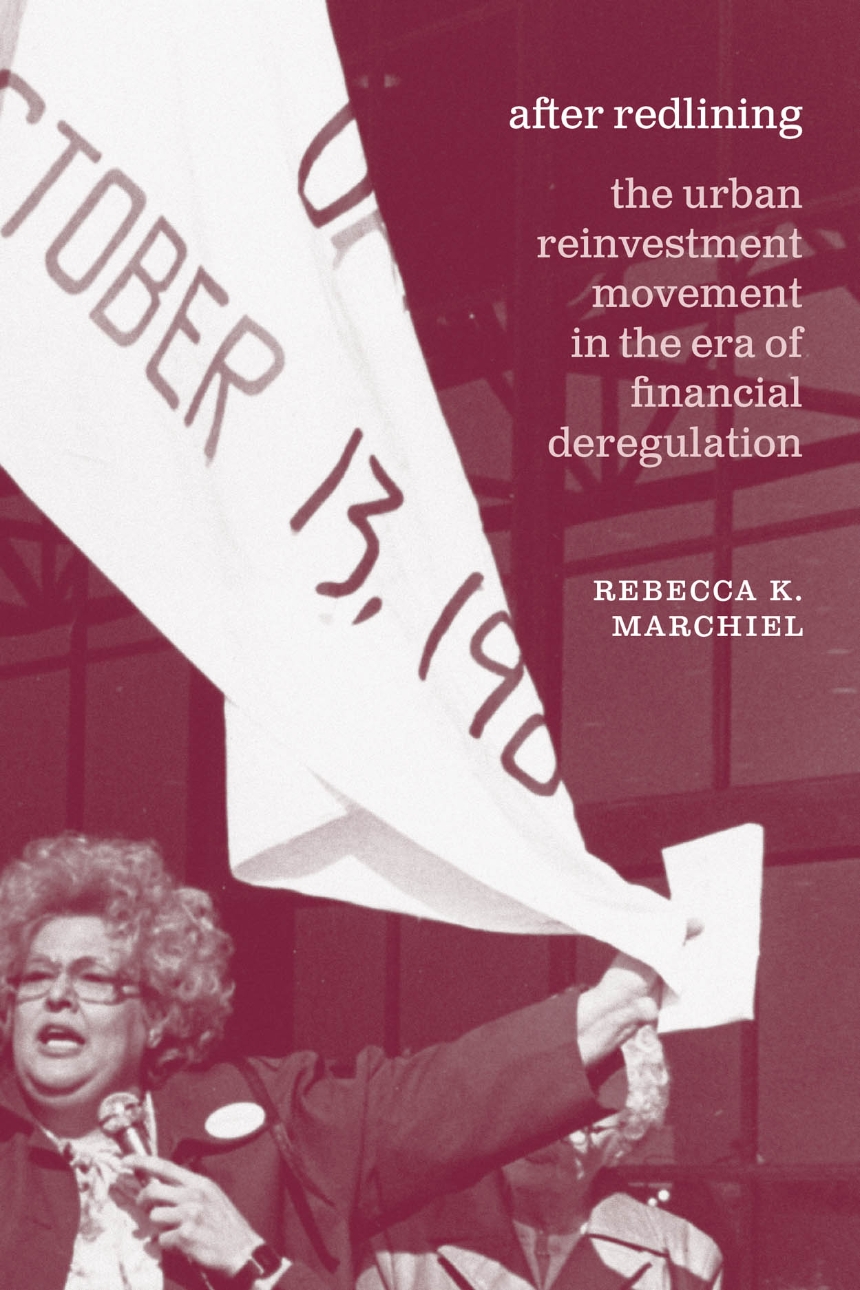After Redlining
The Urban Reinvestment Movement in the Era of Financial Deregulation
9780226815862
9780226723648
9780226723785
9780226832326
After Redlining
The Urban Reinvestment Movement in the Era of Financial Deregulation
Focusing on Chicago's West Side, After Redlining illuminates how urban activists were able to change banks’ behavior to support investment in communities that they had once abandoned.
American banks, to their eternal discredit, long played a key role in disenfranchising nonwhite urbanites and, through redlining, blighting the very city neighborhoods that needed the most investment. Banks long showed little compunction in aiding and abetting blockbusting, discrimination, and outright theft from nonwhites. They denied funds to entire neighborhoods or actively exploited them, to the benefit of suburban whites—an economic white flight to sharpen the pain caused by the demographic one.
And yet, the dynamic between banks and urban communities was not static, and positive urban development, supported by banks, became possible. In After Redlining, Rebecca K. Marchiel illuminates how, exactly, urban activists were able to change some banks’ behavior to support investment in communities that they had once abandoned. The leading activists arose in an area hit hard by banks’ discriminatory actions and politics: Chicago’s West Side. A multiracial coalition of low- and moderate-income city residents, this Saul Alinsky–inspired group championed urban reinvestment. And amazingly, it worked: their efforts inspired national action, culminating in the federal Home Mortgage Disclosure Act and the Community Reinvestment Act.
While the battle for urban equity goes on, After Redlining provides a blueprint of hope.
American banks, to their eternal discredit, long played a key role in disenfranchising nonwhite urbanites and, through redlining, blighting the very city neighborhoods that needed the most investment. Banks long showed little compunction in aiding and abetting blockbusting, discrimination, and outright theft from nonwhites. They denied funds to entire neighborhoods or actively exploited them, to the benefit of suburban whites—an economic white flight to sharpen the pain caused by the demographic one.
And yet, the dynamic between banks and urban communities was not static, and positive urban development, supported by banks, became possible. In After Redlining, Rebecca K. Marchiel illuminates how, exactly, urban activists were able to change some banks’ behavior to support investment in communities that they had once abandoned. The leading activists arose in an area hit hard by banks’ discriminatory actions and politics: Chicago’s West Side. A multiracial coalition of low- and moderate-income city residents, this Saul Alinsky–inspired group championed urban reinvestment. And amazingly, it worked: their efforts inspired national action, culminating in the federal Home Mortgage Disclosure Act and the Community Reinvestment Act.
While the battle for urban equity goes on, After Redlining provides a blueprint of hope.
296 pages | 12 halftones | 6 x 9 | © 2020
Historical Studies of Urban America
Economics and Business: Economics--History
History: Urban History
Sociology: Social Change, Social Movements, Political Sociology
Reviews
Table of Contents
Introduction. Neighborhoods First
Chapter 1. Beyond the Backlash: Organizing against Real Estate Abuse in a “Transitional” Urban Neighborhood
Chapter 2. The FHA in the City: Red Lines and the Origins of the Urban Reinvestment Movement
Chapter 3. It’s Our Money: Defending Financial Common Sense in a Collapsing New Deal Order
Chapter 4. Communities Must Be Vigilant: The Financial Turn in National Urban Policy
Chapter 5. Reinvestment for Whom? The Limits of Bank-Led Reinvestment
Chapter 6. Let’s Make the Market Work for Us: The Lost Fight for Credit Allocation and the Rise of Community-Bank Partnerships
Conclusion
Chapter 1. Beyond the Backlash: Organizing against Real Estate Abuse in a “Transitional” Urban Neighborhood
Chapter 2. The FHA in the City: Red Lines and the Origins of the Urban Reinvestment Movement
Chapter 3. It’s Our Money: Defending Financial Common Sense in a Collapsing New Deal Order
Chapter 4. Communities Must Be Vigilant: The Financial Turn in National Urban Policy
Chapter 5. Reinvestment for Whom? The Limits of Bank-Led Reinvestment
Chapter 6. Let’s Make the Market Work for Us: The Lost Fight for Credit Allocation and the Rise of Community-Bank Partnerships
Conclusion
Acknowledgments
List of Abbreviations for Archival Collections
Notes
Index
List of Abbreviations for Archival Collections
Notes
Index
Awards
Union League Club of Chicago: Outstanding Book on the History of Chicago
Honorable Mention
